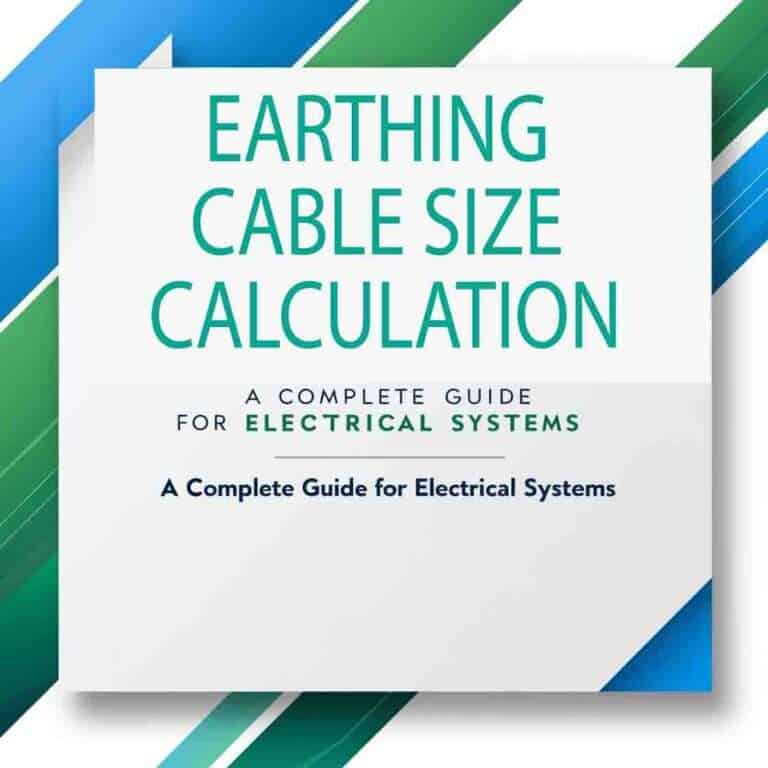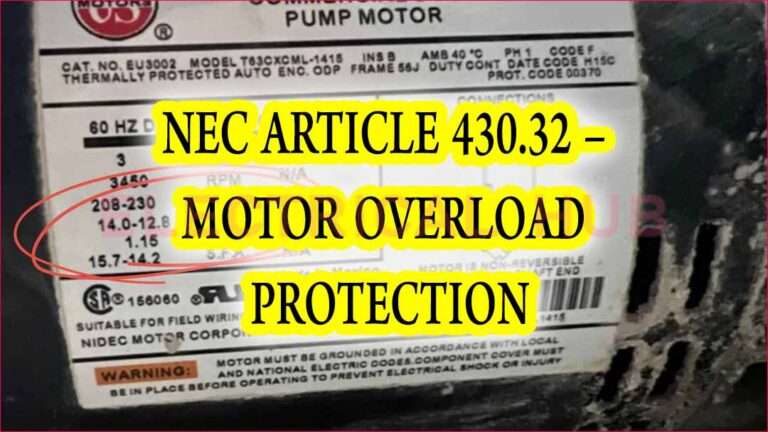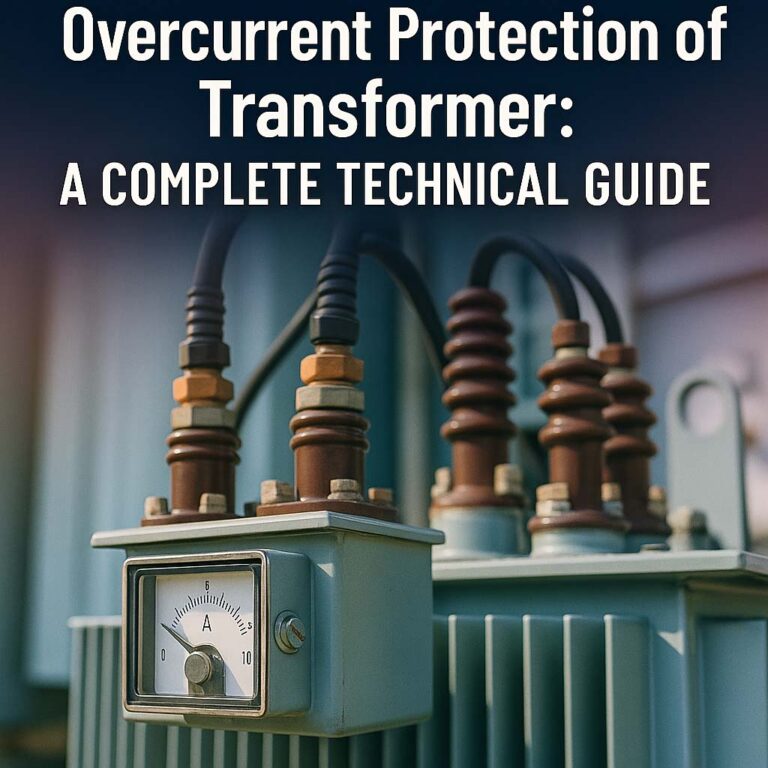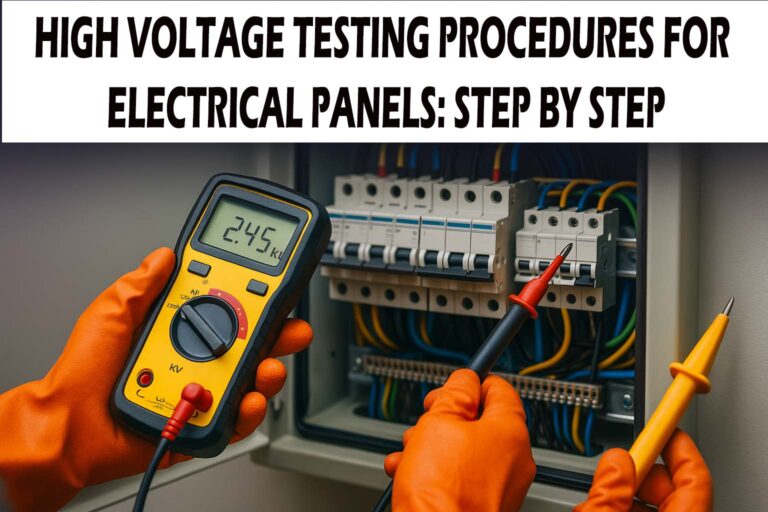IEC Standard for Arc Flash Study: A Complete Guide for Electrical Engineers
Understanding the IEC Standard for Arc Flash Study
The IEC standard for arc flash study provides a framework for assessing and managing arc flash hazards in electrical systems. Arc flash is a serious event. It can cause burns, injuries, and even death. That’s why studying it using international standards is critical. The International Electrotechnical Commission (IEC) plays a vital role in setting the safety benchmarks.
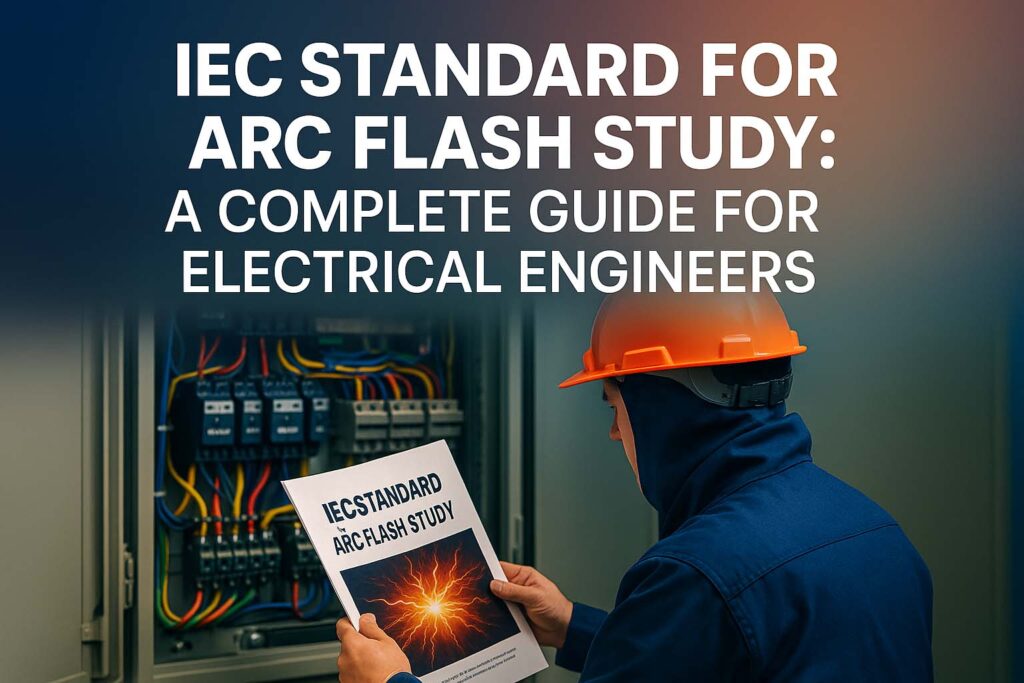
Arc flash happens when electric current jumps through the air between conductors. It creates a flash of light, heat, and pressure. This event can reach temperatures over 35,000°F. It can destroy equipment and pose extreme danger to workers. The IEC standard for arc flash study ensures that engineers evaluate these hazards and design systems with safety in mind.
IEC doesn’t publish a single document named “Arc Flash Study Standard.” Instead, multiple standards come together to form a robust guide. These include IEC 61482-1, IEC 60204, IEC 60909, and IEC 60865. Each contributes in a unique way to how arc flash is studied and mitigated.
Why Is Arc Flash Study Important?
Arc flash studies help identify high-risk zones in electrical systems. The goal is to reduce the incident energy at potential arc points. This reduces harm to personnel and protects equipment. The study gives key details like the arc flash boundary and required PPE (Personal Protective Equipment).
Here’s why it matters:
- Prevents loss of life
- Reduces equipment damage
- Helps comply with regulatory requirements
- Informs design decisions to improve safety
- Avoids unnecessary downtime
In environments like substations, industrial control panels, and switchgear rooms, arc flash risk is especially high. That’s why adherence to IEC standard for arc flash study is essential.
Know more about IEC Standard for Cable Lugs
Key IEC Standards That Influence Arc Flash Studies
Let’s take a look at how different IEC documents come into play:
| IEC Standard | Title | Role in Arc Flash Study |
|---|---|---|
| IEC 61482-1-1 & 1-2 | Protective Clothing Against Thermal Hazards of Electric Arc | Defines PPE requirements and test methods |
| IEC 60909 | Short-Circuit Currents in Three-Phase AC Systems | Essential for calculating fault current |
| IEC 60204-1 | Safety of Machinery – Electrical Equipment | Covers safe electrical design in machines |
| IEC 60865 | Short-Circuit Currents – Forces on Equipment | Helps assess mechanical stress from faults |
| IEC 60364 | Low Voltage Electrical Installations | General rules for electrical installation safety |
Although not named directly, IEC TR 61641 is also critical. It provides guidelines for testing arc resistance in low-voltage switchgear assemblies.
Steps in Conducting an Arc Flash Study as per IEC
The IEC standard for arc flash study guides engineers through several critical steps. Each one contributes to a complete and accurate hazard assessment.
1. Data Collection
The first step is collecting system data. This includes line diagrams, protective device details, cable lengths, equipment ratings, and transformer data.
2. Short-Circuit Analysis
Using IEC 60909, calculate the maximum and minimum fault currents. This helps define the available energy during a fault.
Know more about IEC Standard for Cable Tray
3. Equipment Evaluation
Evaluate whether the existing equipment can withstand arc flash stress. Use IEC 60865 and TR 61641 for guidance on switchgear and control panels.
4. Incident Energy Calculation
This step calculates the potential energy released during an arc. IEC doesn’t prescribe a fixed method here. But IEEE 1584 is often used alongside IEC standards for the actual calculation.
5. Define Arc Flash Boundary
Determine the distance at which a person would receive a second-degree burn. This helps set safe work limits.
6. PPE Selection
Refer to IEC 61482-1-1 and IEC 61482-1-2. These define arc-rated clothing and test methods. They help choose the correct protective gear based on the energy levels.
7. Labeling and Reporting
All electrical panels should carry arc flash labels. The label must mention incident energy, arc flash boundary, and PPE class. A detailed study report is created for review and audit.
Know more about Contact Resistance Test IEC Standard
How IEC Differs from IEEE in Arc Flash Studies
While IEC standard for arc flash study is widely accepted in Europe and Asia, IEEE 1584 is more common in North America. The biggest difference is that IEEE gives detailed formulas for energy calculation. In contrast, IEC focuses more on protective clothing and equipment behavior.
IEC is more modular. It lets engineers use IEEE calculations while still complying with IEC safety and equipment standards. This hybrid approach is common in global industries.
Here’s a simple comparison:
| Aspect | IEC Standard | IEEE 1584 |
|---|---|---|
| Origin | Europe / International | USA / International |
| Focus | PPE, equipment design, system safety | Arc flash energy formulas |
| Use Case | Risk control, design validation | Arc energy calculation |
| Flexibility | Allows integration with IEEE | Mostly self-contained |
Know more about Circuit Breaker Timing Test Procedure
Common Mistakes in Arc Flash Studies
Even when using the IEC standard for arc flash study, mistakes can happen. Here are some of the most common issues:
- Using outdated equipment data
- Ignoring minimum fault current levels
- Not updating the study after system changes
- Incorrect PPE selection based on inaccurate energy levels
- Lack of worker training on label interpretation
Avoiding these mistakes ensures that the study remains reliable and actionable.
Implementing IEC-Based Arc Flash Programs in Industries
Industries looking to apply the IEC standard for arc flash study should take a structured approach. Start with risk assessments and electrical safety audits. Follow this by data collection and simulation. Implement PPE policies and ensure proper signage.
It’s also important to train engineers and technicians. They should understand labels, use PPE correctly, and follow safe work practices. Maintenance schedules should include updates to arc flash studies every 3–5 years or after major system changes.
Some large facilities even set up software systems to track arc flash risk in real time. These platforms integrate SCADA, asset management, and arc flash modeling software to ensure continuous safety.
Know more about Types of Generator Protection Relays
Final Thoughts on IEC Standard for Arc Flash Study
The IEC standard for arc flash study is essential for modern electrical system safety. It helps engineers minimize risk, meet compliance, and protect lives. The standard is not a single document but a set of harmonized guidelines. When followed correctly, it ensures a complete and reliable arc flash analysis.
Electrical safety isn’t optional. By following IEC principles, industries build systems that are safer, smarter, and more resilient. It’s time we gave arc flash studies the attention they truly deserve.
Follow Us on Social:
Subscribe our Newsletter on Electrical Insights to get the latest updates in Electrical Engineering.
#IECStandard, #ArcFlashStudy, #ElectricalSafety, #ArcFlashProtection, #IECElectrical, #ArcFlashAnalysis, #ElectricalEngineering, #WorkplaceSafety, #IECStandardsCompliance, #PowerSystemProtection, #ShortCircuitAnalysis, #ElectricalHazards, #ArcFlashRisk, #SafetyInEngineering, #IndustrialElectricalSafety

